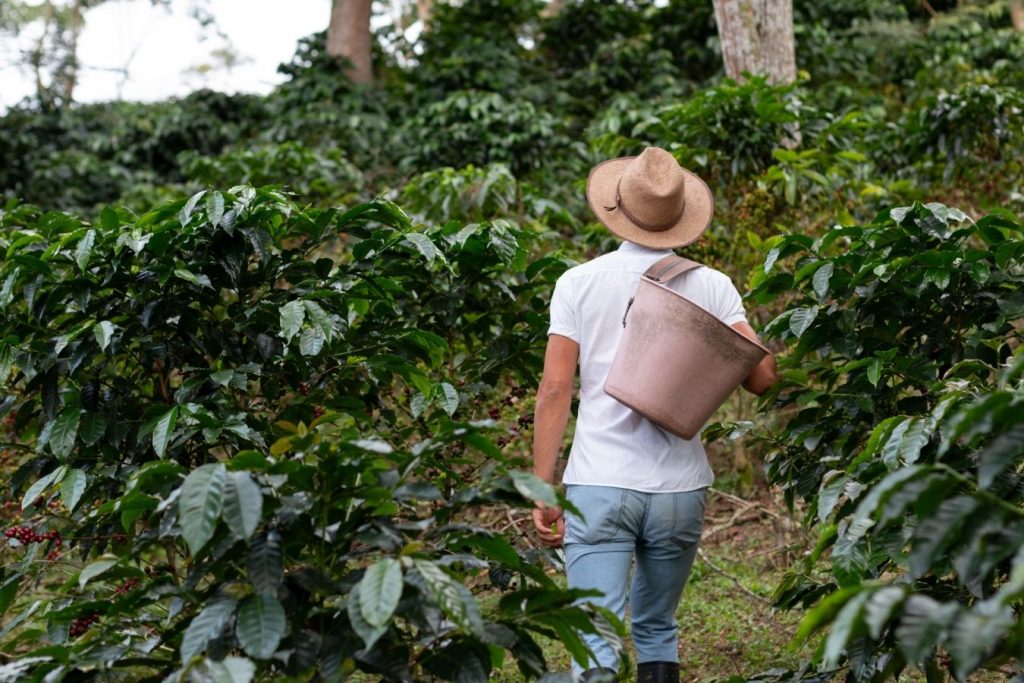
Papua New Guinea also has a fairly early history of coffee growing. In the late 19th century, British and German colonists brought coffee here to grow and exploit. Papua New Guinea thanks to the suitable climate and soil has brought about coffee with unique flavors. They are known for their wild, unexpected beauty and are somewhat different from other Asian coffees next door.
“You will feel like you are eating a box of dried jam, not coffee. As soon as you take the first sip. A mild sour taste of grapes mixed with a little sweetness of dried mango quickly invaded the oral cavity. The more you drink, the more you drink, the more you can feel that sweetness become thicker and stay in the throat.”
Papua New Guinea coffee history
However, there is a sad thing wabout Papua New Guinea coffee. Although it has such unique flavors, it is known and tested by very few people. There are many reasons for this, but a large part is due to the difficulty of coffee production in Papua New Guinea.

The first obstacle may be the political and social instability that is still present. As the most ethnically diverse country in the world, Papua New Guinea has an extremely diverse indigenous culture. Although there are only more than 8 million people, there are 841 different indigenous language groups. And it is not surprising that tsome many conflicts and struggles causeinstability and ups and downs in the coffee industry.
Papua New Guinea Coffee Mysterious Taste From Oceania
Not only that, but this place also suffers from heavy rains and earthquakes every year. The infrastructure in Papua New Guinea, which was extremely unspoiled, is now severely degraded. And coffee is grown mainly in the highlands of Papua New Guinea, but where roads are not yet developed. Therefore, it is extremely difficult to transport coffee here, making it easy to lose quality.
David Hannon, CEO of New Guinea Highlands Company, said: “The journey to bring coffee from the highlands to Lake(the export port on the west coast of Papua New Guinea) requires courageous truckers in the process. many hours to overcome steep roads and huge potholes. During heavy rains, this transport route is almost impassable.
Because of these difficulties, Papua New Guinea coffee currently accounts for only 1% of theworld’sd. Small quantity and also only served mainly in a few major coffee countries. However, these challenges and difficulties are only part of it. The Papua New Guinea coffee industry still faces a series of challenges such as old and outdated technology, low education, and most of the farms being extremely small and fragmented…

However, Helena believes that we still have grounds to be optimistic about the future of the high-quality coffee industry here. Because in recent years, the reputation of Papua New Guinea coffee is becoming more and more widely known.
The government, as well as international organizations, increasingly support the development of coffee here. Not only that butt, but the coffee makers of Papua New Guinea are also gradually uniting together.
Most recently, the Papua New Guinea coffee growers federation consisted of nearly 100,000 members. Together they were to bring coffee to the most demanding coffee markets
It is because of having the right help from the outside and the right leadership from within. Hopefully, Papua New Guinea coffee will grow stronger and stronger. To be able to bring coffee like toe this “Kenya of Asia” more widely.
Keywords: wanna try add, rate it wanna, admission free Australia, culture book club, theater admission free, great barrier reef, māori culture book, center admissadmiss-originster hall admission, hall admission free, single origin coffee